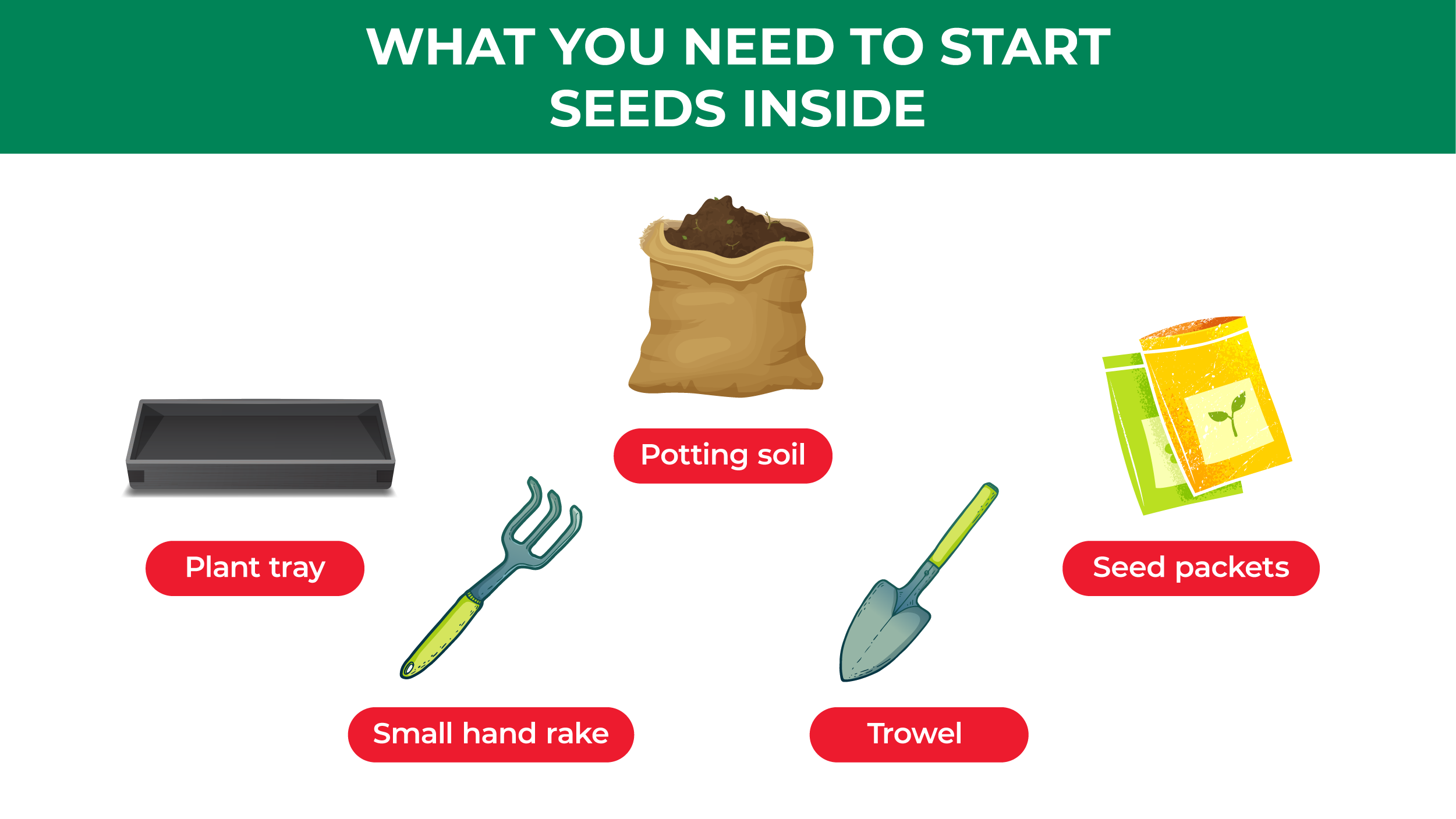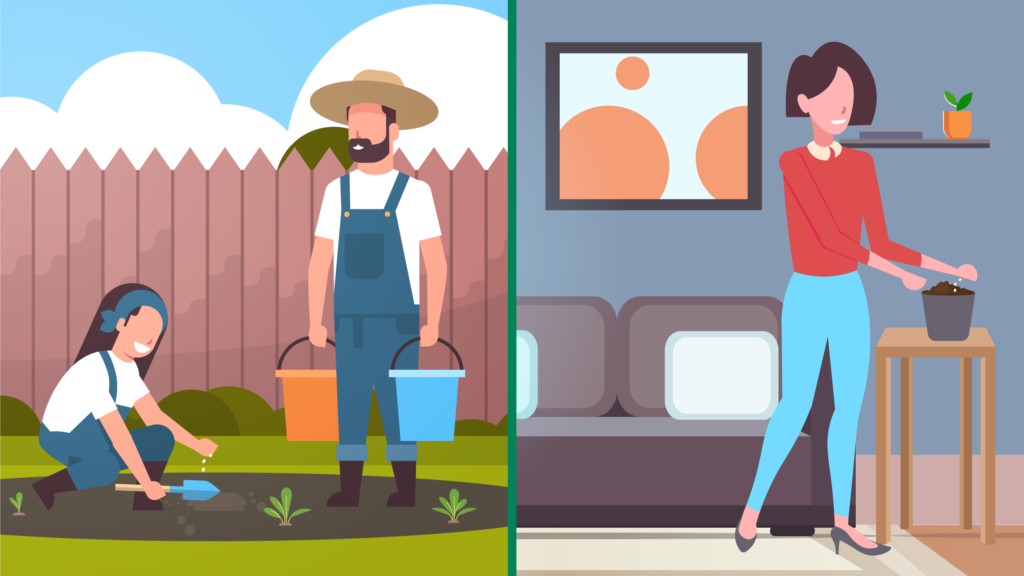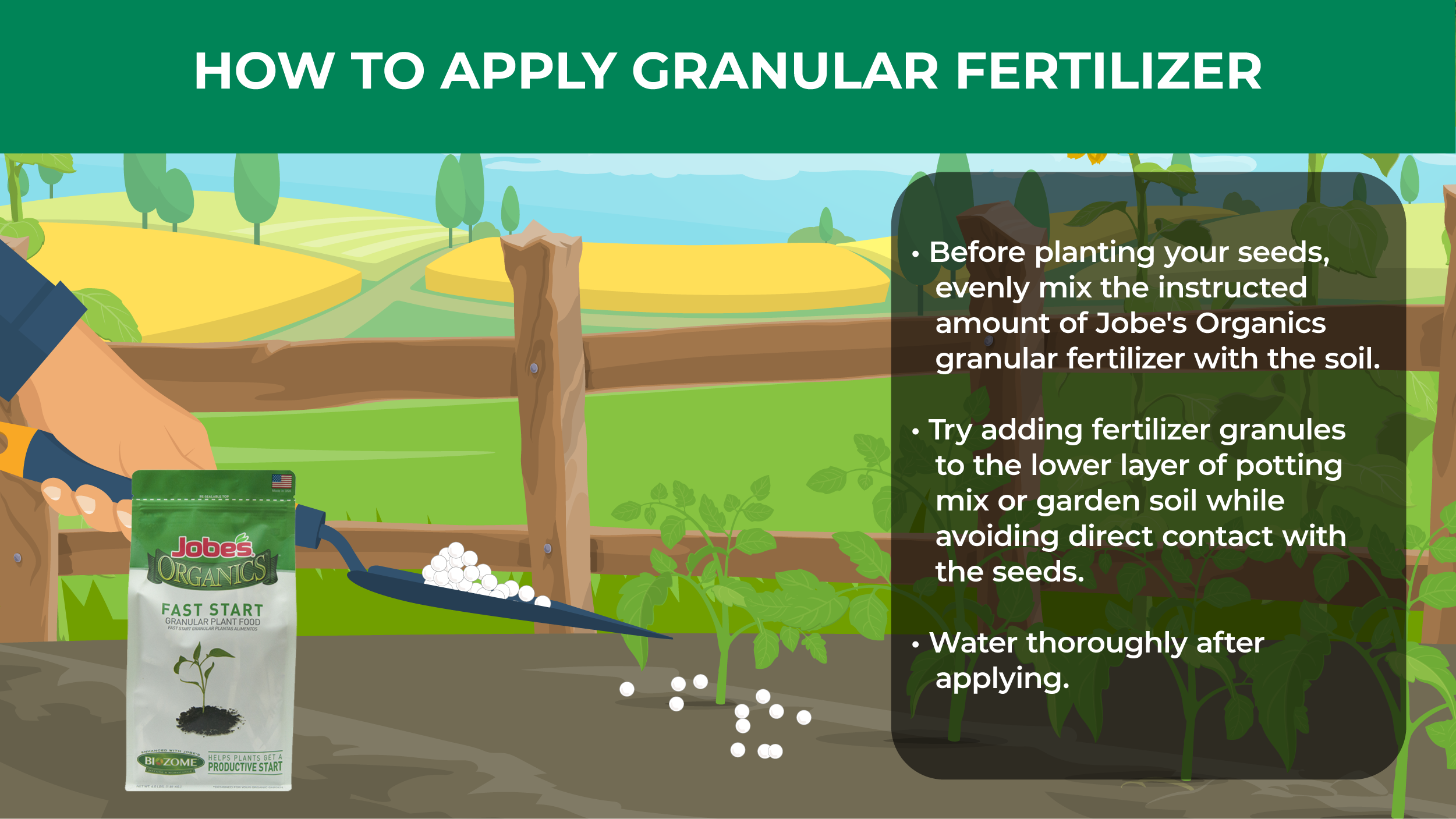As warmer weather approaches and people spend more time outside, it’s a perfect time to start thinking about your spring and summer gardening habits. If you’ve never planted a garden before, the prospect may feel a little overwhelming at first. But it shouldn’t! Starting a garden can be a rewarding experience and a great hobby, not to mention the added benefit of enjoying growing your own delicious produce. Depending on your needs and wants, gardening for edible vegetables and herbs can sometimes differ from simply gardening for color or curb appeal. Some seeds, for example, may start inside before migrating outdoors. Others can be planted directly in the ground.
At Jobe’s, we think everyone has a little green in their thumb and are dedicated to helping you discover it. Let’s look at the best way to start seeds for common garden plants.
Preparing to Garden
If you’ve got the gardening bug, the best thing you can do to set yourself up for success is to plan out what you’d like to grow and where. Make sure you’re aware of several key factors for your region, such as the amount of sunlight your plants are likely to get as well as the average “last frost date” for the area. (This can vary from place to place, so don’t count on one single date from a different region.) Be sure to account for things like tree cover—you’re probably going to plan your garden before all your trees’ leaves have come in. Don’t plan for it in a place that won’t be able to offer much-needed sunlight later in the season.
If you’re a beginner gardener, start small: no more than a few dozen plants in a few varieties, at least until you get your bearings. Starting seeds isn’t complicated, but it does demand a good bit of daily attention, especially if you’re planning on doing it indoors.
Buy the Right Supplies

To start seeds, you’ll need a few key items to get the ball rolling. Whether you’re headed to your local hardware store for garden materials or order items online, remember to buy:
- Trays for seeds
- Garden soil
- Potting soil
- Seeds for the plants you wish to grow
- Other equipment such as trowels, hand rakes, etc.
Read the Seed Packet for Instructions
Whether you’re planning on starting your seeds inside or outside, the first thing you’ll need to do is read the instructions. They’ll actually tell you where your seeds can (or should) be started. For instance, some plants end up doing better if you sow them directly into the ground, while others require time spent indoors.
Plants to Start Indoors
There are a variety of different plants and vegetables that can thrive if you start seeds inside and transplant them later, including:
- Onion
- Tomatoes
- Lettuce
- Kale
- Broccoli
- Peppers
- Many types of flowers, including pansies, violets, and marigolds
These are the easiest types of plants to start as indoor seedlings, which is why they’re usually recommended for beginning gardeners.
Sowing Seeds Indoors
To start seeds indoors, you’ll need to achieve a happy balance of giving your seeds lots of sunlight, giving them just enough water, and keeping them warm. If you start them too soon or start too many seeds at once, they won’t grow or thrive, and taking them outside too early will cause them to wither and die.
So, how do you manage all these requirements?
Instead of relying on natural light in your home, consider buying large grow lights and keep them turned on for 12 to 16 hours each day. You can even use a timer to turn them on and off automatically.
Watering your plants from the bottom (that is, letting them soak up water through the holes in their pots) will help ensure the soil moisture level is just right. Be sure to check the wetness of plant soil daily, and never water for longer than 30 minutes. If price is no issue, you may also invest in a self-watering system, but it’s not required.
When to Move Plants Outside
The best way to tell when it’s time to put your crops outside is to check the seed packet and to watch for that last frost date. Once this time has passed and the soil is warm, you can start relocating them to your actual garden. Just be careful not to move them too early. If you’ve had a colder spring, consider waiting a few more weeks, then gradually introduce them to the sun. After a week or so, they’ll be acclimated to outdoor sunlight and temperatures and be ready to live outside.
Plants to Sow Outdoors
Much like how some plants thrive as indoor starters, some can do just as well when they’re planted outside to begin with. Aside from ornamental plants, there are a lot of vegetables that work well outdoors:
- Leaf lettuce, best sown a week before the last frost date.
- Carrots, which should be sown a week or two before the last frost.
- Radishes, which grow fast, can mature in three to four weeks.
- Pea plants should be planted two weeks before the final frost. Just make sure to use a trellis or support structure for the vines to grow on.
- Corn requires warm soil, so wait until after the last frost date.
When you plant these vegetables outside, do so in straight rows. This will help you tell the difference between weeds and the actual plants themselves.
Helping Your Plants Grow
Whether you’ve decided to seed your plants outside or inside, there are always ways to help jumpstart the growing process. A quality, organic plant food, such as Jobe’s Organics Fast Start Granular, is formulated to help seeds and new plantings grow. You can also utilize fertilizer spikes and tablets that are specially designed for your particular plants.
Start Growing Better Things with Jobe’s
Whether you’re a brand-new gardener or an experienced green thumb, you know that the right kind of plant fertilizer and products can really help your garden thrive. When the time comes to start planting your season’s share of flowers and vegetables, choose Jobe’s. Our specially formulated fertilizers, soil amendments, and other garden accessories can help turn your small garden into a bountiful harvest.


